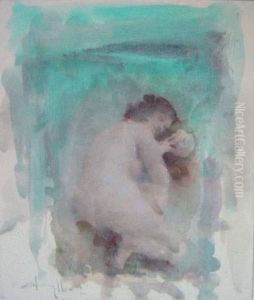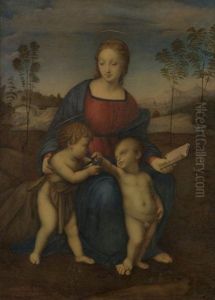Antonio Falda Paintings
Antonio Falda was an Italian artist, engraver, and printmaker, known primarily for his detailed etchings and prints of architecture and urban landscapes. Born in 1630 in Valduggia, a small town in the province of Vercelli, Piedmont, he moved to Rome at a young age, where he would spend most of his life and career. Falda's work provides a significant visual record of the Baroque Rome and has been instrumental in the study of the city's historical urban development.
Falda began his artistic training in Rome, and by the mid-17th century, he had become a prominent figure in the production of vedute, a genre of highly detailed, usually large-scale prints or paintings of cityscapes or other vistas. He worked for Giovanni Giacomo de Rossi, a leading publisher of prints in Rome, who published many of Falda's works. His prints were sought after not only for their aesthetic value but also for their accurate representation of contemporary Rome, making them valuable to historians and architects.
One of Falda's most important works is the series 'Le Fontane di Roma' (The Fountains of Rome), published in 1675, which depicted the many new fountains that had been constructed in Rome during the Baroque period, such as those designed by Gian Lorenzo Bernini. Another significant contribution is his 'Il nuovo teatro delle fabriche et edificii, in prospettiva di Roma moderna' (New Theater of Buildings and Edifices in Perspective of Modern Rome), a collection of etchings that documented the city's buildings and urban spaces.
His work is characterized by its meticulous attention to detail and its combination of topographical accuracy with aesthetically pleasing composition. This made Falda's prints not just works of art but also reliable documents of Rome's urban landscape during a period of significant growth and transformation. His influence extended beyond his lifetime, as his prints continued to be a point of reference for the appearance of Rome in the 17th century.
Antonio Falda's legacy is preserved in the collections of various museums and libraries around the world. His detailed etchings remain a valuable resource for understanding the historical context and architectural development of Rome in the Baroque period. He died in 1678, leaving behind a body of work that continues to be appreciated for its artistic merit and historical significance.

